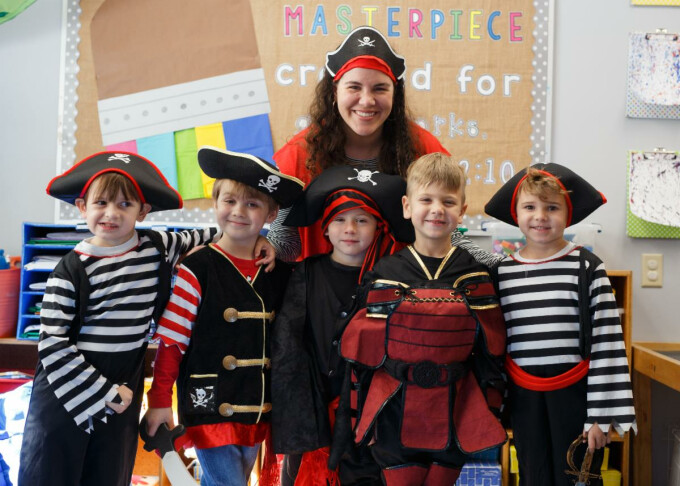Chalk and chalkboards have never been my thing; that scratching sound, the dust and mess…not to mention, the board never quite cleans up all the way. With so much technology at our fingertips, do we need a chalkboard? Educators have studied the science of learning and development for decades and data continues to change the educational environment.
Multisensory learning is not new and has been deeply incorporated into every aspect of the PCA Preschool classrooms. When a child explores a toy, they touch it, hold it, and may even put it in their mouth. All these actions are providing sensory input and information to their brain. Incorporating additional senses helps lock the information into the brain for retention, recall and understanding.
In the PCA Preschool 4-year-old classes, students are learning to form letters, numbers, and shapes. Using a process called Wet-Dry-Try (Learning Without Tears), students use a multisensory approach on personal sized chalkboards. First, a small damp sponge is used to form the letter, shape, or number. Next, students use a cotton ball to retrace their original lines. Finally, students use a piece of chalk repeat the formation.
Feeling the texture of each item, as well as the texture of the chalkboard, allows multiple senses to experience the formation, creating deeper retention and understanding. This process is repeated several times, ensuring the student’s ability to develop proper handwriting skills. Wet-Dry-Try (Learning Without Tears) is just one step in the handwriting process. Additional sensory tools are used including sand, rice, and play dough. I still get chills at the sound of scratching on a chalk board, however, it’s all worth it to help my students develop long-lasting handwriting skills.


